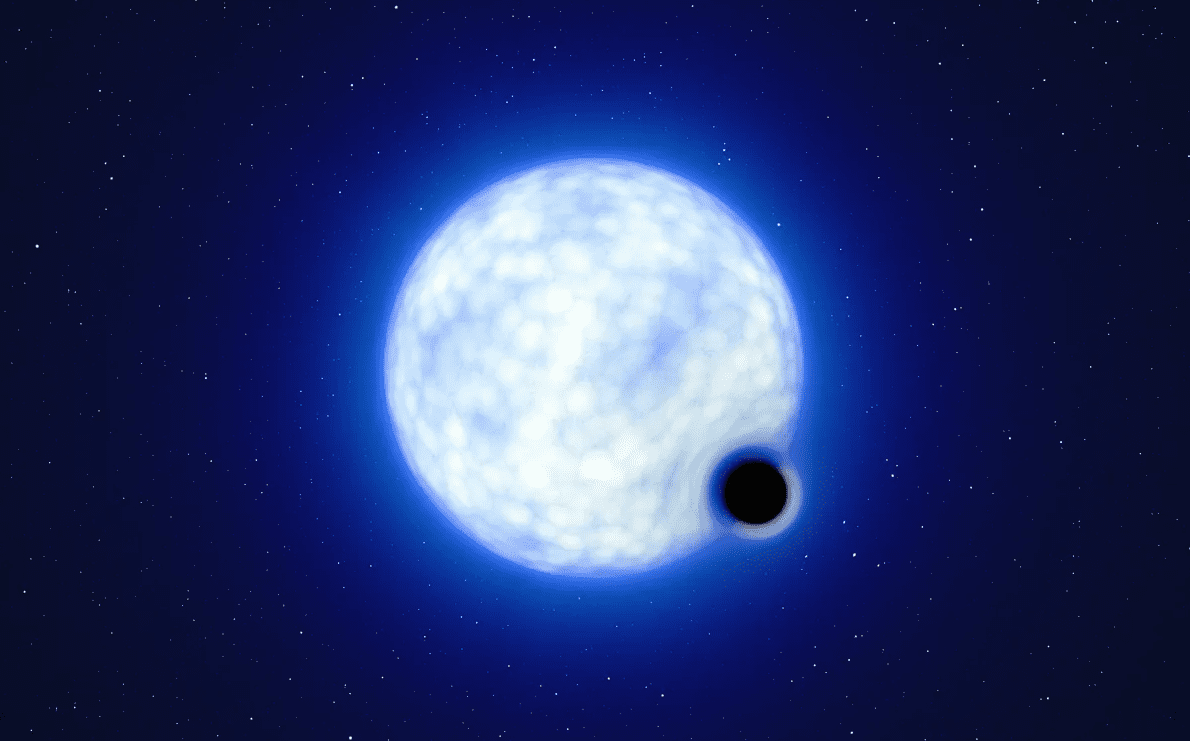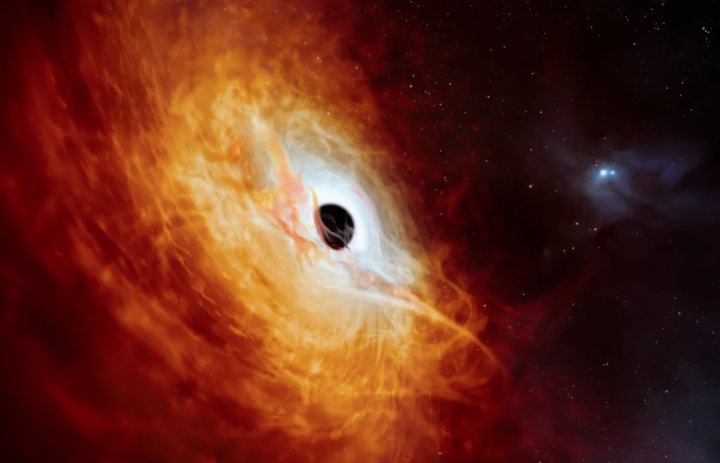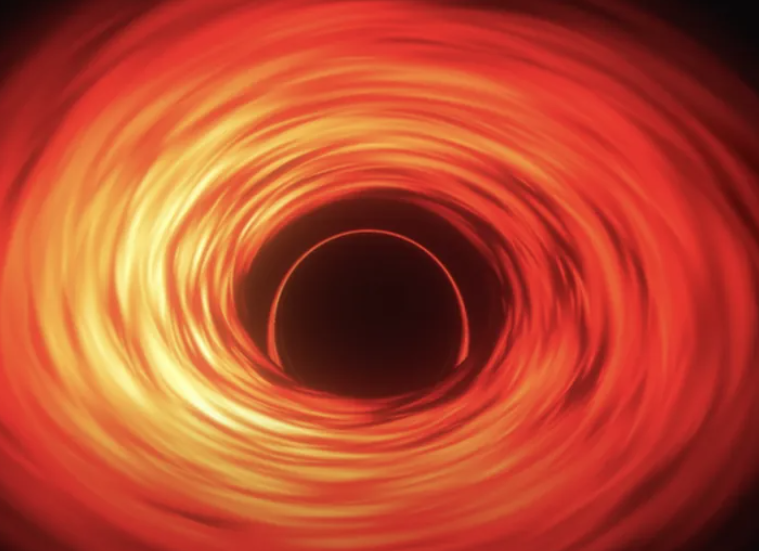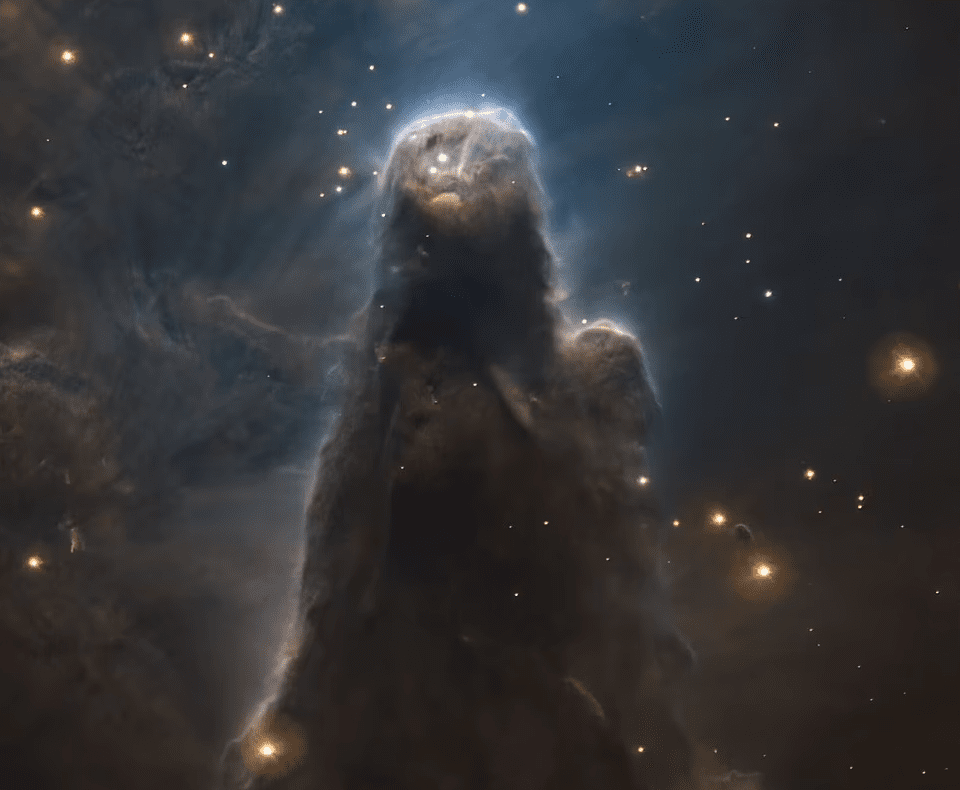In the Large Magellanic Cloud, a black hole with a mass nine times greater than the Sun has been found.
It’s difficult to find black holes. They are black by definition since nothing, not even light, can pass through them. So astronomers must devise alternate strategies to locate them. When gravitational waves combine, one direction results. Or when they feed, they emit a strong amount of x-rays. This makes it very challenging to locate the silent ones, or so-called latent black holes. Finding one in the neighboring galaxy is now undoubtedly reason for jubilation.
- Robot Dog Learned to Walk in Just One Hour
- Europe’s fear has come true… Russia gave the first signal for gas cuts!
The Tarantula Nebula, the largest galaxy-sized partner to the Milky Way, is found in the Large Magellanic Cloud, which was studied by the team of researchers. VFTS 243 was one of those objects, and its measurements are consistent with the existence of a black hole with a mass of nine solar masses around a bright blue star that is almost three times as massive.
The discovery, which was published in Nature Astronomy, was made by a team that had spent years refuting earlier candidates for dormant black holes. They took what they saw as such with a grain of salt. After all, when you are roughly 160,000 light-years away, there may be other hypotheses that fit the observations.
According to study leader Tomer Shenar of Amsterdam University, “I was quite hesitant regarding this discovery as a researcher who has refuted putative black holes in previous years.”
“I had my reservations when Tomer requested me to confirm his findings. However, I was unable to come up with a reasonable denial for the data, according to co-author Kareem El-Badry of the Center for Astrophysics | Harvard & Smithsonian.
This particular stellar-mass black hole develops upon the death of a big star. After the star explodes in a supernova, several will form, ejecting part of the stellar debris into intergalactic space. not this one though. This one was a unique formation, according to the crew.
Shenar continued, “There is no indication of a previous explosion, and the star that generated the black hole in VFTS 243 appears to have disintegrated utterly. “Although new evidence for this “direct-collapse” scenario has begun appearing, our analysis perhaps offers one of the most direct arguments. This has significant effects on how black-hole mergers develop throughout the galaxy.”
Since it is only fair after serving as the “black hole police” for so long, the team is allowing other teams to examine their findings. Once VFTS 243 is confirmed, they are hoping that their strategy will lead to the finding of many more of similar objects.
Given how frequent astronomers think dormant black holes to exist, co-author Pablo Marchant of KU Leuven commented, “It is incredible that we scarcely know of any dormant black holes.”





